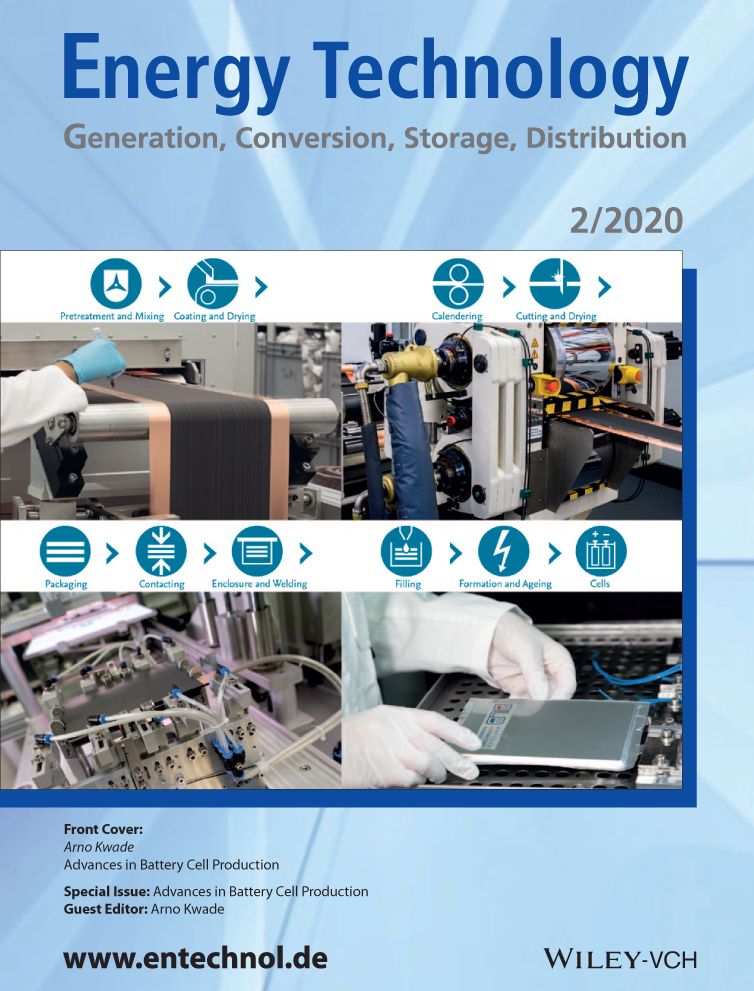Heated Calendering of Cathodes for Lithium-Ion Batteries with Varied Carbon Black and Binder Contents
Abstract
Electrodes are usually calendered to enhance the energy density and improve the electrochemical cell performance. However, low porosities can compromise these two important features. To achieve the optimum porosity, a comprehensive process control is of major interest. This study further develops a Heckel-based compaction model considering the impact of the roll temperature and discusses the effect of the composition. Increasing the temperature of the roll linearly decreases the achievable coating porosity and the line load effort due to the rise of the elastic deformability of the thermoplastic binder PVDF. Reduced contents of simultaneously less-distributed additives increase the achievable coating porosity. Furthermore, the poor distribution is the main factor for lower line load efforts with lower additive contents. Moreover, the adhesion strength of the coating improves with increasing the temperature of the rolls due to the thermal rising of the elasticity of the binder.
Conflict of Interest
The authors declare no conflict of interest.




